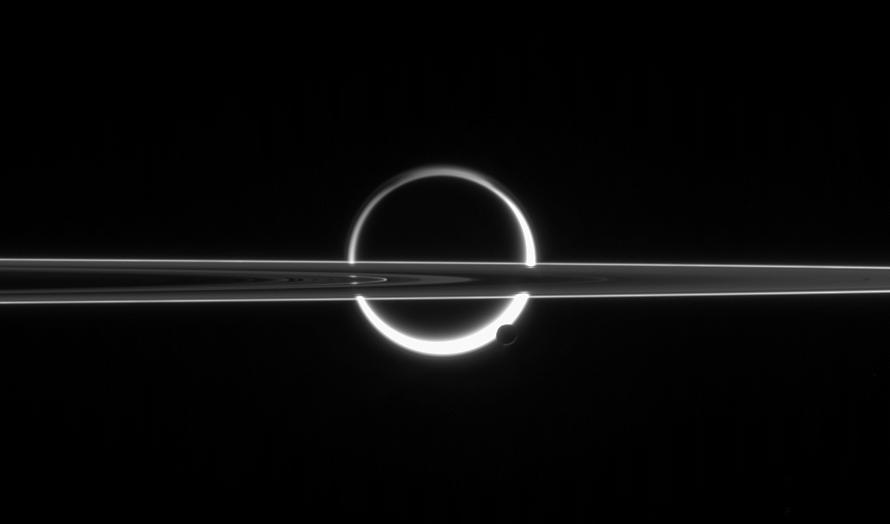Eclipses can happen anywhere, anytime a celestial body passes in front of another with the consequence of blocking its light as seen from a third location. This page explores different eclipses that occurs elsewhere in our Solar System, often away from Earth.
Solar Eclipses as seen from Mars
In 2020, the NASA Rover Perseverance caught the moon Phobos eclipsing the Sun as seen from the planet Mars. It doesn’t look anything like a solar eclipse on Earth. For one, the moons orbiting Mars are small and cannot cover the whole disk of the Sun. Even more striking, the shape of Mars’ moons (Phobos and Deimos) are not round so that the dark spot created by them make the eclipses look somewhat funny. Phobos and Deimos are not round because they are not massive enough for gravity to shape them into a sphere. They are more likely to be asteroids captured in a distant past by the gravitational field of Mars.
Since the launch of the first Mars Rover Missions by NASA about two decades ago, many such eclipses have been recorded. The first Martian solar eclipse was observed by the rovers Spirit and Opportunity in 2004. Then the rover Curiosity obtained a video of such eclipse. Other than being beautiful, these eclipses help astronomers and planet geologists study various physics phenomenons such as calculating tiny shifts in the orbit of Phobos and the interior of Mars and its moons. The moons’ tidal forces pull on the deep interior of the Red Planet, as well as its crust and mantle; studying how much Phobos shifts over time reveals something about how resistant the crust and mantle are, and thus what kinds of materials they’re made of.
Solar Eclipses as seen from Saturn
Cassini, a spacecraft sent by NASA to explore the giant planet Saturn, has captured wonderful eclipses over the course of its mission. One of the most amazing pictures is the one below, showing an annular solar eclipse produced by Titan, the largest moon in the Solar System. The shot also caught the spectacular rings of Saturn in the mix, as well as another moon Enceladus.


More at the NASA/Cassini website.
Transits of Venus
In some cases, the object blocking the sunlight is far away. In that case, astronomers more commonly use the word transit rather than eclipse to describe the phenomenon. As seen from Earth, we can sometimes see the planet Venus passing in front of the Sun (or transiting). The last time it happens, it was in 2012 and 2004.
When a transit occurs, a small black spot can be seen blocking the Sun’s disk. The spot progressively moves over several hours. In 2012, it took Venus 6 hours and 40 minutes to cross the solar disk. They are very rare and happens much less often than solar or lunar eclipses. The next transit of Venus will be in December 2117, a full 105 years after the 2012 Venus transit.

Video of Venus transit as seen from space by the Solar Dynamics Observatory (NASA):